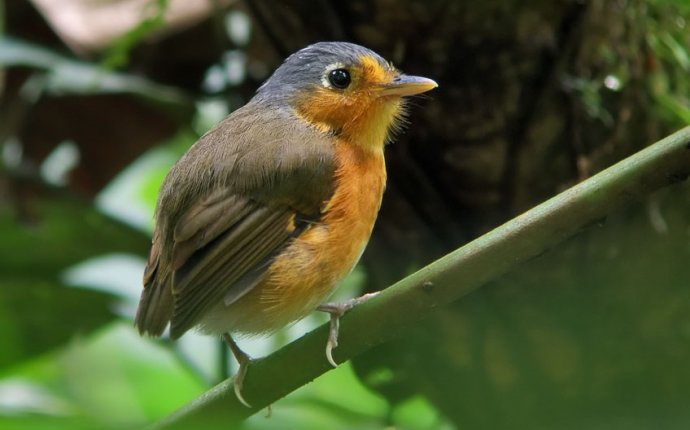
White Belly Bird
 My, what a soft belly you have.
My, what a soft belly you have.
Photo by Frederic J. Brown/AFP/GettyImages
The phrase “soft white underbelly” describes the anatomy of a broad spectrum of animals ranging from sharks to amphibians to birds and even some mammals. Why is the most notorious biological vulnerability on Earth so ubiquitous?
Pale underbellies are most often found among animals that need to worry about danger from below. Creatures that swim, fly, or climb may blend into the background water or sky above if their bellies are light. Animals can also benefit from a camouflage concept called countershading. By having darker pigment on the part of the body that receives the most light and lighter pigmentation on the part that receives less light, the animal’s appearance tends to flatten out and is less conspicuous.
But what explains the softness?
One might think that the basic skeletal design of vertebrates has always neglected to protect abdomens—the rib cage covers the chest and opens up around the belly in most familiar species. But this was not always so. Many prehistoric animals had a group of protective bones called gastralia that covered their bellies like a second set of ribs. Gastralia provided not only some measure of physical protection but also attachment points for abdominal muscles and other tissue.
Theropod dinosaurs such as Tyrannosaurus rex had gastralia, as did pterosaurs and champsosaurs. Archaeopteryx had gastralia, though modern birds do not. It isn’t hard to imagine why birds lost those abdominal bones. Getting off the ground quickly requires being as light as possible. Birds have hollow bones because of this evolutionary pressure. If the gastralia were adding weight and the birds didn’t tend to be attacked in the stomach very often, then birds born without those bones may have been able to get into the air and stay there more easily.
Perhaps the birds illustrate why other species lost or never bothered with abdominal bones. Extra bones or armor take a lot of calories and calcium to grow and maintain. It’s like the MRAP armored vehicles that the U.S. military used in Iraq. Soldiers and Marines needed the bellies of their vehicles heavily armored to protect against roadside bombs. Once they left Iraq and the threat of sudden death from below was lower, the military discarded the MRAPs in favor of lighter, faster vehicles that also happen to use less fuel. As in nature, military vehicles evolved from having soft bellies, to armored ones, and then back to being soft-bellied.
Today there are still a few animals with gastralia. The crocodilians, an ancient group of animals that dates back to the time of the early dinosaurs, all have gastralia within their white underbellies. But for the most part, animals really do expose soft white underbellies to the modern wild.









